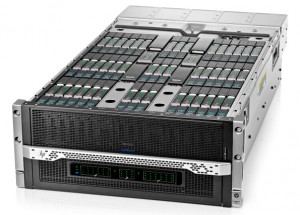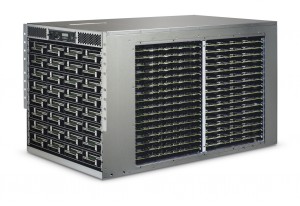Last week Verizon made big news in the cloud industry that they were shifting gears significantly and were not going to have their clouds built on top of traditional enterprise equipment from the likes of HP, Cisco, EMC etc.
I can’t find an article on it but I recall hearing on CNBC that AT&T announced something similar – that was going to result in them in saving $2 billion over some period of time that I can’t remember.
Today our friends at The Register reveal that this design win actually comes from AMD‘s Seamicro unit. AMD says they have been working closely with Verizon for two years on designs for a highly flexible and efficient platform to scale with.
Seamicro has a web page dedicated to this announcement.
Some of the capabilities include:
- Fine-grained server configuration options that match real life requirements, not just small, medium, large sizing, including processor speed (500 MHz to 2,000 MHz) and DRAM (.5 GB increments) options
- Shared disks across multiple server instances versus requiring each virtual machine to have its own dedicated drive
- Defined Storage quality of service by specifying performance up to 5,000 IOPS to meet the demands of the application being deployed, compared to best-effort performance
- Strict traffic isolation, data encryption, and data inspection with full featured firewalls that achieve Department of Defense and PCI compliance levels
- Reserved network performance for every virtual machine up to 500 Mbps
I don’t see much more info than that. Questions that remain with me are what level of SMP will they support, and what processor(s) are they using (specifically are they using AMD procs or Intel procs since Seamicro can use both, Intel has obviously been dominating the cloud landscape, so it would be nice to see a new large scale deployment of AMD).
I have written about SeaMicro a couple times in the past, most recently comparing HP’s Moonshot to the AMD platform. In those posts I mentioned how I felt that Moonshot fell far short of what Seamicro seems to be capable of offering. Given Verizon’s long history as a customer of HP, I can’t help but assume that HP tried hard to get them to consider Moonshot but fell short on the technology(or timing, or both).
Seamicro, to my knowledge (I don’t follow micro servers too closely) is the only micro server platform that offers fully virtualized storage, both inside the chassis as well as more than 300TB of external storage. One of the unique abilities that sounds nice for larger scale deployments is the ability to export essentially read only snapshots of base operating systems to many micro servers for easier management(and you could argue more secure given they are read only), without needing fancy SAN storage. It’s also fairly mature (relatively to the competition) given it’s been on the market for several years now.
Verizon/Terremark obviously had some trouble competing with the more commodity players with their enterprise platform both on cost and on capabilities. I was a vCloudExpress user for about a year, and worked through an RFP with them at one of my former companies for a disaster recovery project. Their cost model, like most cloud providers was pretty insane. The assumption we had at the time is we were a small company without much purchasing leverage, so expected the cost to be pretty decent given the volumes a cloud provider can command. Though reality set in quick when their cost was at least 5-6 fold what our cost was for the same capabilities from similar enterprise vendors.
Other providers had similar pricing models, and I continue to hear stories to this day about various providers costing too much relative to doing things in house (there really is no exception), with ROIs really never exceeding 12 months. I think I’ve said many times but I’ll say it again – I’ll be the first one to be willing to pay a premium for something that gives premium abilities. None of them come close to meeting that though. Not even in the same solar system at this point.
This new platform will certainly make Verizon’s cloud offering more competitive, they are having to build an entirely new control platform for it though – not much off the shelf software here, simply because none of it is built to that level of scale. Such problems are difficult to address, and until you encounter them you probably won’t anticipate what is required to solve them.
I am mainly curious whether or not these custom things that AMD built for Verizon — if those will be available to other cloud players. I assume they will..

